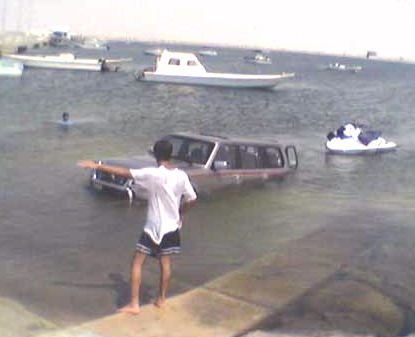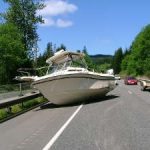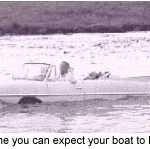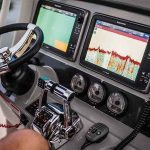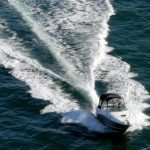Want to minimize the chances of trouble on the road with your trailer? Then pay attention to the three main causes of roadside breakdowns…flat tires, bearing failures, and tow vehicle problems like overheating. If you maintain your tires and bearing on the trailer properly, and make sure you have an appropriate and well maintained tow vehicle, you reduce your chances of a travel breakdown tremendously.
Make sure your bias ply or radial trailer tires were made for trailering. A “ST” designation on the sidewall indicates “special trailer” used for boat trailers. These tires have stronger sidewalls than “P” (passenger) and “LT” (light truck tires). Also never mix bias ply (commonly used for short trips or when a trailer is parked for long periods) with radial tires (preferred for high-mileage trips).
Tire inflation is the most basic tire maintenance issue. Tires should be inflated while cold, before the trip — not during. And if all else fails, having a spare tire is key, but unfortunately most trailer manufacturers neglect to include one as standard equipment. Be sure to bring a tire and rim combo when shopping for your spare as not all are alike. Ensure your jack can handle the trailer as well.
A tire’s worst enemy is dry rot caused by the UV rays. If you store your boat and trailer outside during the winter, remove the tires and keep inside if possible. Tire covers can also help. Moisture can also doom a tire, especially if the trailer sits idle for a long time on grassy, damp ground. Again, removing the tire is best but parking on plywood can also help. If parking on a hard surface such as concrete, ensure that water freely drains away from the trailer after a rainstorm.
Never use a bumper hitch to pull your boat. The hitch should be rated for the load you’ll be pulling, and fastened securely to the tow vehicle frame. This will minimize trailer sway and separation.
Make certain the coupler on the trailer matches the size of the ball on the hitch. A two inch coupler will fit easily over a one and seven-eighths inch ball, but it you’ll run the risk that the coupler will disengage itself from the ball when you hit a bump.
The tongue weight of the loaded trailer should be 7-10% of the combined weight of the boat and the trailer. If it’s less than that you run a good chance of sway while towing. If it’s more than that, the tow vehicle will drag it’s tail, making your headlights point skyward.
Know your boat and trailer weight, as overloading can lead to premature wear and potentially dangerous blowouts. Check out the trailer manufacturer’s load capacity. Stay below 90% of the recommended load capacity to allow room for the weight of fuel, gear, anchors, lines, and other items you’ll be toting with you.
Most trailer-boaters don’t pay nearly as much attention to their trailer as they do to their boat. If you have brakes on your trailer, check the brake fluid level periodically. Have your bearings inspected annually, and packed or replaced when necessary. And at least once a year, tighten all bolts and other trailer hardware.
Cross the safety chains under the trailer tongue before hooking them to your hitch or frame. If the tongue disengages in transit, it will drop down on the crossed-chain “cradle”, and may keep the tongue from dipping to the roadway.
When launching a sailboat, always be aware of overhead obstructions…tree limbs, power cables, light post extensions, etc.
The secret to hassle-free launching of your boat is practice, practice, practice. Every boat, trailer, and tow vehicle will have perform a bit differently than any other, so visit the launch ramp when it’s not busy and practice turning, backing, unloading, and loading.
A good trick to backing your trailer is to place your hand at the bottom of the steering wheel of the tow vehicle. If you move your hand to the right, the back of the rig will swing to the right. Move your hand to the left, you bring the back of your trailer to the left.

